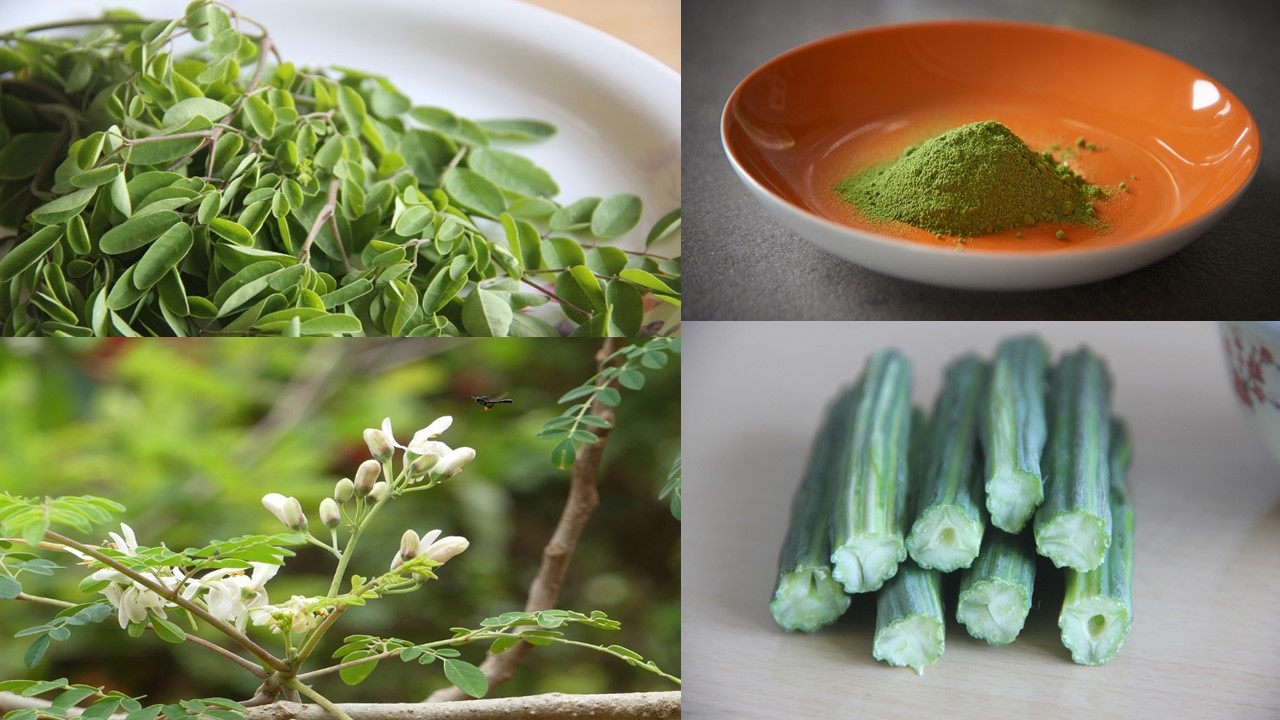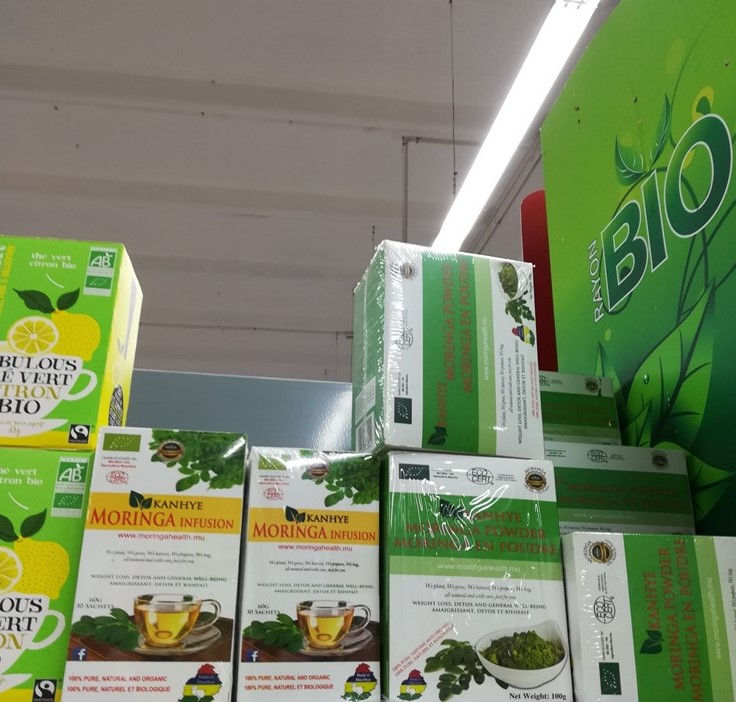Moringa oleifera (Brede Mouroum), The Magical Tree

The content of this article is for educational purpose only and is not intended as medical advice. Please seek the help of a doctor before using the below mentioned plant.
Moringa Oleifora, brede mouroum in Mauritius, is widely known around the world as the ‘magic tree’ or ‘miracle tree’. And this is not without solid Foundation. As it currently stands, research shows that the leaves of the moringa contain 30 times more iron than spinach. Additionally, the tree has 9 times more calcium than yoghurt and 7 times more vitamin C than oranges.
As it is, Egyptians, Romans and Greeks have traditionally used Moringa to treat a wide array of diseases. This includes infertility, obesity, diabetes and cardioprotection. Since the health benefits of the moringa have been widely reported, people have researched on the matter extensively.

General description
The name Moringa comes from the Tamil word murungai as the plant originates from India. Basically, this means twisted pod because the seeds grow in long, big pods. What’s more, people also call Moringa the drumstick tree because of the long fruits. Others still call it the ben oil tree; ben oil is commonly used as a base for perfumes.
Generally, moringa grows well in arid regions and can reach heights up to 10 m. The bark is around 40 cm in diameter and becomes greyish once the tree comes to maturity. It also has white flowers that are very small and that occur in clusters. Furthermore, the fresh fruit of the moringa is long and thick and can be up to 30 cm in length.
What does Moringa contain?
Basically, every part of the tree is edible and is beneficial to health. But the most important parts that are used in cooking and as medicine are the leaves, seeds and pods. The table below shows the nutritional composition of these parts.
| Nutrients/100mg of plant material | Leaves | Seed | Pod |
| Calories (cal) | 92 | – | 26 |
| Protein (g) | 6.7 | 36 | 2.5 |
| Fat (g) | 1.7 | 39 | 0.1 |
| Carbohydrate (g) | 12.5 | 8.7 | 3.7 |
| Fibre (g) | 0.9 | 2.9 | 4.8 |
| Vitamin B1 (mg) | 0.06 | 0.05 | 0.05 |
| Vitamin B2 (mg) | 0.05 | 0.06 | 0.07 |
| Vitamin B3 (mg) | 0.8 | 0.2 | 0.2 |
| Vitamin C (mg) | 220 | 4.5 | 120 |
| Vitamin E (mg) | 448 | 760 | – |
| Calcium (mg) | 440 | 45 | 30 |
| Magnesium (mg) | 42 | 642 | 24 |
| Phosphorous (mg) | 70 | 75 | 110 |
| Potassium (mg) | 259 | – | 259 |
| Copper (mg) | 0.07 | 5.5 | 3.1 |
| Iron (mg) | 0.85 | – | 5.3 |
| Sulphur (mg) | – | 0.05 | 137 |
Uses of the different parts
Since a long time, people have used Moringa to treat some 300 diseases ranging from fever to cancer. While many of these claims require scientific validation, the most common ones are listed below.
Leaves
Moringa leaves are rich in flavonoids. Thus, they help to boost the immune system, remove oxidizing agents from the body and prevent diabetes. People commonly use them to treat flu, asthma, heartburn, syphilis, headaches, scurvy, ear and eye infections, hyperglycaemia, pneumonia, dyslipidaemia, malaria, bronchitis and reduce blood pressure and cholesterol levels.
Flowers
What’s more, the flowers contain high levels of calcium and potassium as well as nectar. They are therefore used by beekeepers to make honey and also to cure urinary problems and cold.
Pods
As it is, the pods are loaded with high amounts of fatty acids like linoleic acid and palmitic acid. Thus, people use them to treat obesity, cure diarrhoea, liver and spleen issues and joint pains.
Seeds
Seeds of the tree contain phytochemicals and flavonoids that give them anti-inflammatory properties. As such, they are used to treat arthritis, gout, cramp, epilepsy, hyperthyroidism and sexually transmitted diseases.
Root bark
Finally, the root bark contains various alkaloids. Thus, we use it to suppress ulcers as well as a cardiac stimulant.
Nutritional value of the Moringa
Fight malnutrition
As amazing as it is, the tree requires very little attention to grow. In Mauritius, moringa grows almost everywhere just like in the dry countries of Africa such as Ethiopia, Senegal and Benin. As malnutrition is a recurring problem in these places, people use moringa a lot to compensate. While children drink moringa infusions to fight malnutrition symptoms, mothers take it for their mammary glands to produce milk.
Often prescribed to pregnant women
Also, doctors often prescribe moringa powder to pregnant women. About 6 spoonfuls per day can meet a pregnant woman’s required intake of iron and calcium. As far as traditional medicine goes, pregnant women in countries like Seychelles and India traditionally drink infusions of moringa leaves to obtain iron.
Planting Moringa
This miraculous tree grows well in the tropics and subtropics within a temperature range of 25°C to 35°C. It requires 250 to 3000 mm of rainfall and slightly acidic or alkaline sandy or loamy soil. You can put the seed some 2 cm deep in the soil and it will germinate within 5 to 12 days. Then after the plant reaches 30 cm, you can transplant it.
As the stem is thin and fragile, it is better to plant it in places that are shielded from winds. It is worth to note that the different environmental conditions will determine the nutritional values of the trees. As such, trees that grow in India may have slightly different nutritional values than those of Mauritius. Nonetheless, the nutritional benefits remain the same.
Commercial growth of moringa
Today, people commercially cultivate moringa on a large scale for its health benefits. From Florida to the Pacific Islands, many communities grow the miracle tree either for local consumption or for export. For processed moringa, the leaves are dried, processed and packed. Currently, several developing countries like Sri Lanka export moringa products.
Moringa export in Mauritius
Even in Mauritius moringa exportation is becoming common. As the tree grows easily around the island, locals are exploiting this opportunity. Thus, with more people becoming health conscious and research in moringa continues, the future of moringa is bright.


Pingback: 10 common medicinal plants in Mauritius - Yo Nature
Pingback: Jackfruit – Don’t judge by the smell! - Yo Nature